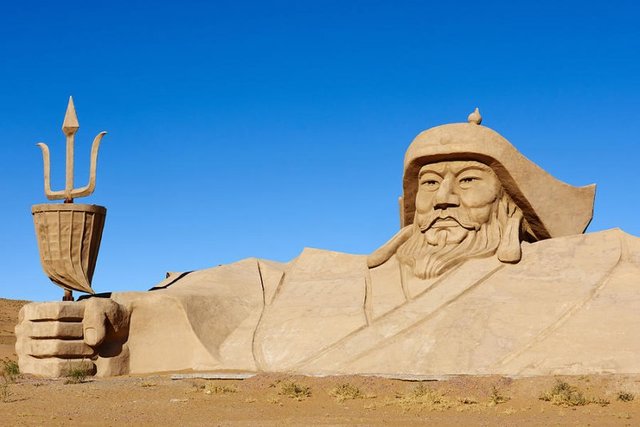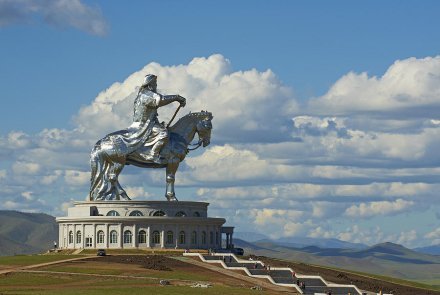Mongol to Turkish: A diverse history of khanate rule by the Khans
Almost all of us are familiar with the title 'Khan'. In the Indian subcontinent, the title 'Khan' is considered to be quite a symbol of nobility. Although at present 'Khan' is found at the end of the name of any Muslim in the subcontinent. Interestingly, 'Khan' also appears at the end of the names of many Hindus in West Bengal.Although there is no aristocratic relationship with 'Khan' at present, the history of the Khans is quite glorious. For example, during the Mughal period in the Indian subcontinent, only the most respected people were awarded the title of 'Khan'. At that time there were a few classes among the Khans. Such as- Khan Sahib, Khan Bahadur, Khan-ul-Azam, Khan-ul-Mu'ayzam, Khan-ul-Azam-ul-Mu'ayzam etc.

Source
The history of the Khans is very old and extensive. Originally the rulers of Khanat or Khaganat were called 'Khan'. Turning the word around, the area ruled by the Khans was called Khanat or Khaganat. Khanat is a vast administrative region of the empire. An empire was divided into many houses. In addition to the central ruler of the empire, each house had a specific ruler. The rulers of the Khanate were always loyal to the central ruler.
Simply put, it was a lot like the current provincial system of government.
It is not possible to say with certainty when the Khanat or Khaganat regime began. However, several dynasties existed long before the establishment of the Mongol Empire. The Rora dynasty was the oldest of them all.Rora Khanat was established in the early 4th century. The khanate was originally founded by the Mongol tribes. This dynasty lasted until about the end of the sixth century. At that time this dynasty was abolished through the Gurturk Rebellion. Later, the Turks emerged through this.
Before the rise of Genghis Khan, the Mongols were not a single nation. They lived a nomadic life in multiple groups and clans. Throughout the Mongol steppe they had numerous small nomadic groups, who, whenever given the opportunity, carried out small raids on the neighboring kingdoms. Robbery and looting were their only hope of survival.
A khanat called 'Khamag' was established in the tenth century. Extensive Mongol nomadic groups then settled in the Anon, Kherlen and Tul river basins. Extending the Mongolian steppe with Mongol nomads, this territory was known as the Khamag Khanat, the first khanat in Mongol history.
However, the most widespread circulation of the Khanate took place after the establishment of the Mongol Empire. Khanate originated in the Mongol Empire centering on the Apaniz system of Genghis Khan. Apaniz was a system through which the wives, sons, daughters and grandsons of Genghis Khan, the ruler of the Mongol Empire, became partners in different parts of the empire. The administration of the various administrative regions of the vast empire was given to one person.Each of these parts of the empire was then called Khanat. Thus the Khanate expanded greatly in the Mongol Empire. In addition to the Mongol Empire, the Khanate spread to the Afsari, Timurid, Turkish and Slavic empires. Let's learn about some of the most famous khanats in history.
★Mongol dynasty
In 1206, the Mongol Empire rose to power under Genghis Khan. It was the fastest growing empire in the history of the world. Within a hundred years of its establishment, it spread to all of East and Southwest Asia and Central Europe. It was the largest uninterrupted land-based empire in the history of the world, reaching an area of about 23 million square kilometers in the thirteenth century.Genghis Khan's first name was Temujin. Originally, Temujin, the ruler of the Mongol Empire, emerged as 'Genghis Khan' through the establishment of khanat or khaganat. Khan was the title of the lords of the dynasties of the Mongol Empire. Since Genghis Khan was the ruler of the entire Mongol Empire, his title was 'Khagan' or 'Khan of the Khands'.It was a lot like the Persian 'Shahenshah', which also meant 'King of Kings'. However, in short he is better known as Genghis Khan. Those who took the helm of the Mongol Empire after Genghis Khan were also awarded the titles of 'Khander Khan' or 'Mahan Khan', such as Kublai Khan.
Since Genghis Khan founded the Mongol Empire, the Mongols regarded him as the father of the nation. The conquest of the Mongol Empire began during the reign of Genghis Khan. At that time he led campaigns against the Chinese empires, the Khwarizmi empire, Persia and the Turkish tribes of West Asia. No empire could survive the devastating and relentless onslaught of the Mongols.Their conquests reached as far as Central Europe. For 21 years before the death of Genghis Khan in 1226, the Mongols wreaked havoc on Muslim tribes and empires in Asia and Europe, enriching the Mongol nation.
The conquest of the Mongols continued even after the death of Genghis Khan. His successors plowed this vast territory from Poland to Korea. They were able to take control of most of the lands of the then Abbasid Empire, including today's Iraq and Iran.The disintegration of the Mongol Empire began with the death of Mangu Khan in 1259. By 1290, this vast empire had split into four parts. Which were- Yuan Empire, Chagtai Khanat, Golden Empire, Ilkhan area.


.jpeg)
Very nice write up. Loved it.